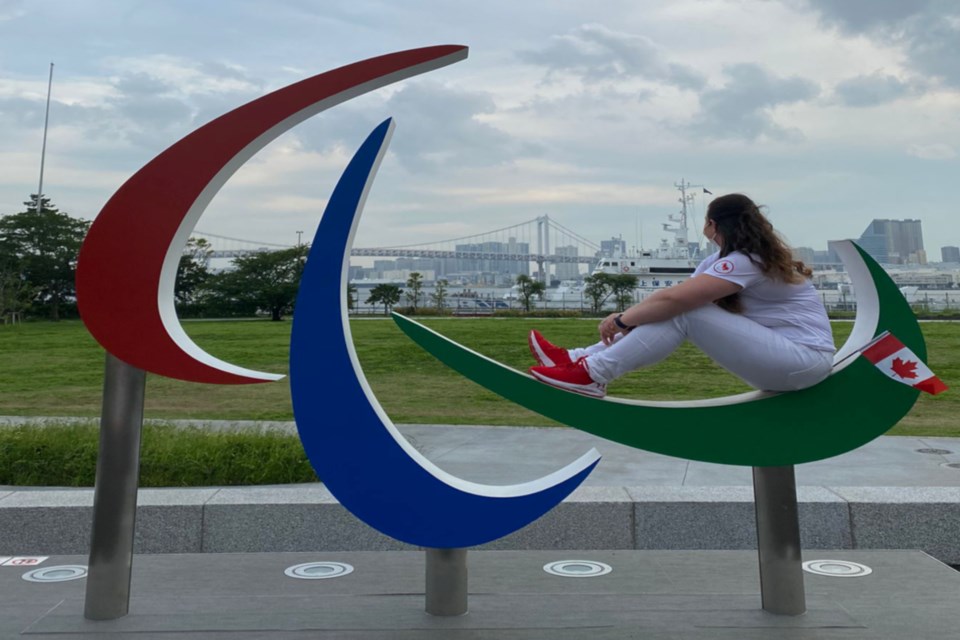ATHABASCA — What do you do when you’re an athlete, but there’s no Paralympic team for you to play on? You help create one.
Amber Skyrpan, 29, was born with a rare, non-hereditary condition called proximal femoral focal deficiency (PFFD) which ranges from a shortened femur to no femur, as was her case, and underwent Van Nes rotationplasty at eight years old which replaced her upper leg with her lower leg flipped backwards allowing the foot and/or ankle to become the knee or prosthetic attachment point and it has not slowed her down.
“My mom played, my dad played (volleyball), that’s how they met and I just kind of always wanted to play it like everyone else in the community (of Wandering River),”
Skyrpan, along with Neerlandia native Heidi Peters, and the rest of her teammates wrapped up the tournament this weekend as the games came to a close, finishing up in fourth place, after facing a very strong Chinese team in the bronze medal match Sunday morning. It's something Skyrpan never could have imagined going to school in Plamondon.
“Growing up I figured I was the only one,” she said. “There was no one in Plamondon, there was no one in Wandering River, there was no one in Lac La Biche, there was no one in Athabasca that I knew of,” she said Aug. 30 in a Zoom call from Tokyo.
Thirteen years ago, while playing in a standing volleyball tournament for Ecole Plamondon she encountered another young woman with the exact same Van Nes rotation after losing her leg to cancer and she told Skyrpan about trying to form a sitting volleyball team with two other women.
“The classification rules have changed in the last year, but typically if you're physically disabled in some capacity – arm, leg, muscle – you can qualify if you go to a tournament, and they have classifiers there; they'll review your medical records,” Skyrpan said.
“To be part of the team, we have tryouts in May typically, but this past year because of COVID, it's kind of weird,” she said. “(This year) we went to a selection camp and we tried out and then the team is picked from the people that attended that camp.”
And training isn’t easy; these are Olympians after all, so they do strength and endurance training, even having to get creative during the pandemic as people staying home bought up weight sets.
“Weights were a hot commodity in COVID so, people were doing backpacks (holding bottles of) windshield washer fluid. Just making weights out of anything and then adjusting it accordingly,” she said. “Our coaches, they watched us over Zoom and watched our contacts of the ball and gave us feedback.”
And playing is every bit as strenuous as standing volleyball as players move around the court. They wear specially designed clothing allowing for less friction on the floor, and keep all skin covered because it doesn’t feel good to drag your bare leg or arm over the floor.
Eight years after the team started, they got enough members and training to qualify for the 2016 Paralympics in Rio where they came in seventh out of eight teams and now the player who wears No. 12 on the court has helped lead the team to a fourth-place victory in Tokyo again out of eight teams.
“I’m very tempted to continue on,” she said, looking forward to the next Paralympic Summer Games. “We’ll see what life has in store.”
The team returned to Canada Sept. 6 and Skyrpan is happy to be heading home to her husband and two step-children who sent her a pick-me-up video while she was away.
“They sent me a little video last night (Aug. 29),” she said. “I have an old jersey so one’s wearing my jersey and one’s wearing my older Team Canada gear."



